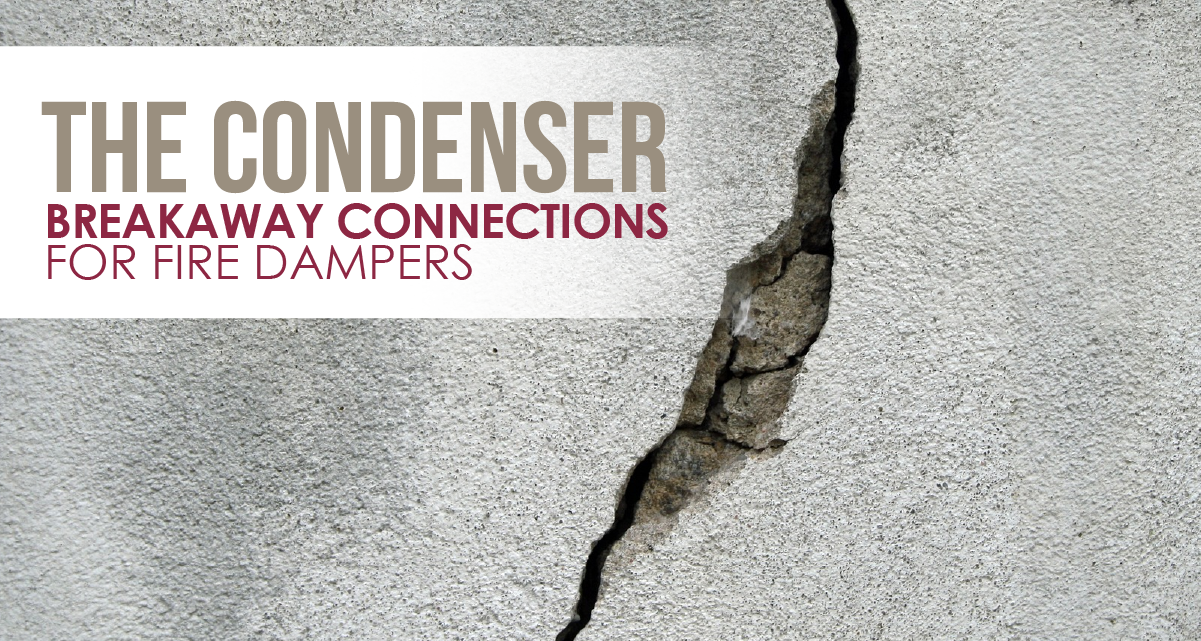A lot can happen during a fire. Debris can fall and ducts can fail, but your fire dampers need to stay in place to keep the fire barrier intact. Breakaway connections help. Learn how in this article.
Fire Dampers and Fire Barriers
Fire dampers cover openings in fire-rated barriers. They are a key component in fire response. These dampers close to prevent the spread of flames through penetrations in fire barrier, like ductwork and vents.
These dampers must stay in the barrier to help maintain the barrier’s fire rating, no matter what happens. Otherwise, if the damper falls out, there will be a hole in the barrier for flames to pass through. Breakaway connections help fire dampers stay in place during a fire.

In approved fire damper installations, the damper sleeve is not fastened directly to the duct. Ductwork can fail during a fire, either by a loss of support or when the duct is struck by falling debris. If the fire damper is directly attached, then the duct could pull the damper out of the fire barrier as it falls. This leaves a hole in the barrier. Breakaway connections solve this issue by separating the duct from the damper.
Breakaway Connections
These small connectors join the damper’s sleeve with the duct. Breakaway connections can take a variety of forms. For demonstration, let’s look at the “S” clip connection.
 This is the S-clip. Note how the damper's sleeve and the ductwork slide into each end of the clip.
This is the S-clip. Note how the damper's sleeve and the ductwork slide into each end of the clip.
The “S” clip has two grooves, one on each side of the connector, which form an “S” shape. The edge of the damper’s sleeve will slide into the groove on one side and the edge of the duct opening slides into the groove on the opposite side.
These edges will overlap inside of the "S" clip, like in the image above. Other connector types will have different configurations, depending on the needs of the installation. For instance, the double “S” clip has a small gap between the sleeve and duct connections, and the two ends do not overlap in the clip. The resulting shape looks like two S's sitting back-to-back. The connection will join the duct to the damper sleeve.
With breakaway connections, the duct can fall away while the fire damper stays inside the barrier. This design works for vertical and horizontal mounting, but the specifics of the installation will differ depending on the orientation of the damper.

Manufacturers will provide information on breakaway connections in their fire damper installation guide. Consult the manufacturer’s instructions for relevant details to your installation type.
For more on dampers, check out these Newsstand articles:
- Passive Fire Protection in HVAC
- The Four Types of UL Life Safety Dampers
- Fire Damper Types and Benefits
- The Condenser - A Closer Look at Curtain Blades
Looking for fire dampers? Louvers & Dampers builds curtain fire dampers and multi-blade fire dampers for meeting UL life safety requirements. We build each damper to your specifications, so that they fit your project. Contact L&D today.
.webp?width=91&height=70&name=MCDLG%20Logo%20(Resize).webp)






